 Physiology
Physiology
Bajorans are humanoid in form and function with the exception of a ridged nose. Slight deviations from Terran human physiology can be discerned through different reactions to body change. During pregnancy, Bajoran females do not nauseate, instead they react by sneezing. Bajoran fetuses are also irremovable due to the high degree of vascularization in the placental/uterine interface.
Society and Religion
Bajoran culture flourished for 500,000 years. In time, the Bajorans became a race of master artisans, architects, and scholars whose lives are centered around their faith. Their deeply religious culture honor the "Prophets" who guide the Bajorans. They believe in guidance from the prophecies revealed to ancient religious men much in the same way as the Greeks believed in Delphi Oracles. Within the religious texts of Bajoran faith, safe passage through the Bajoran wormhole is seen as the blessing of the Prophets who reside within in the Celestial Temple.
Prophets The Prophets are the central figures of the Bajoran faith, transcendent entities who exist in a non-linear time frame. Bajoran faith believes the Prophets to be the embodiment of truth, who reveals their wisdom through visions given by the Orbs. The Prophets are also the ones who replenish the life force of Bajorans, the "Pagh" that allows existence.
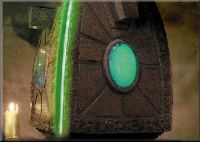
Orbs Approximately 10,000 years ago. The first Orb, with eight others to follow, appeared in the skies of Bajor. Taken as a gift from the Prophets to endow their followers with wisdom and insight, the Orbs were traditionally housed in sacred shrines at temples and monasteries around Bajor. Each Orb has a different function. After the Occupation, only one from the original nine Orbs remained. Through the years, three have been recovered and are currently in the hands of the Bajoran people.

Emissary The title given to the person who would discover the Celestial Temple and speak with the Prophets, then unify the Bajoran people. Commander Benjamin Sisko was announced as the Emissary by Kai Opaka when he had just arrived at the Station. Akorem Laan briefly succeeded Sisko as the Emissary in 2372 when he was transported two centuries from his lifetime into the 24nd century by the Prophets. After reinstating the unpopular D'jarra caste system, Sisko challenged Akorem, and was ultimately vindicated by the Prophets themselves. Captain Sisko is now firmly established as the Emissary of Bajor. The one upon whom the hopes of a whole world fall upon.
D'jarra Caste Ancient Bajorans lived their lives according to the d'jarra caste system. A Bajoran's social status and vocation was dictated by the d'jarra at birth and usually indicated in part within the design of the earring. Passed on for generations, the system was abandoned during the Occupation, when every Bajoran became subservient of the Cardassian Guls.
Earring The identity of Bajorans is intrinsically connected to their earring. The designs is often deeply connected to family lineage and the archaic d'jarra, but some religious figures and Militia officers are known to change their earrings to better adapt to their line of work. The earring is most often worn on the right ear, and is usually diamide-laced birithium in substance.
Name Bajoran custom places the family name before an individual name. Major Kira Nerys is therefor correctly addressed as Major Kira while her actual name is Nerys. The titles of Bajoran rank also are tied to their religious rank. The Kai is the spiritual leader of Bajoran faithful, and a new Kai is named only when the preceding Kai dies or is incapacitated. The Vedek assembly of 112 influential spiritual leaders is lower than the Kai and acts as assistant and preacher to the masses. The political leadership of Bajor is given to the First Minister, who can be any Bajoran national chosen by democratic election.
The current Provisional Government has been in place since the withdrawal of Cardassian forces.
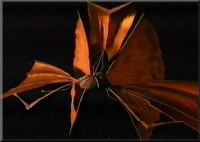
Society
500 millennia ago Bajor was already a flourishing civilization, culturally rich and technologically advanced. Their faith gave the people the peace and harmony of life while fostering the philosophers, architects, and builders that are the pride of Bajoran culture.
10,000 years ago, the first of 9 Orbs fell from the sky, and the present Bajoran faith was founded on the wisdom imparted from Orb-generated visions. In between these ancient times and the 22nd century, Bajoran explorers would travel through near-space with their tachyon accelerated space vessels, coming in contact with nearby Cardassia, whose people were then as peaceful and religious as themselves.
Thousands of years passed. Cardassia Prime became a starved planet that was beset by problems caused by its lack of natural resources. When the military seized control of the government, they believed that only expansion will allow Cardassians to survive. Ruthless conquest of nearby systems followed, and the newly instated Union lost no time in making designs on Bajor.
The Bajoran faith could not have prepare them for the superior military forces of Cardassia, and the planet fell to Cardassian forces in 2328, when it was claimed as the territory of the Cardassia Union . During the years of Cardassian Occupation, which spanned from its formal annexation in 2339 to the withdrawal in 2369, 10 million Bajorans were killed. The Cardassians set up a puppet government that signed all Bajorans into enslavement and in mines or labor camps. In 2351 the Cardassians built the mining station Terok Nor in the orbit of Bajor to process the minerals from the surface and prepare them for transport.
Throughout the 40 years of the Occupation, the underground resistance relentlessly bombed and sabotaged Cardassia's organized government, knowing full well the Cardassians would retaliate with hundred times the ferocity. Resistance cells such as the Shakaar, the Higa Metar, the Khon-Ma and the Ornathia engaged the Cardassians into guerrilla warfare in the mountains of Bajor, somehow always managing to escape Cardassian pursuit. Though millions died during the Occupation, the violent opposition to Cardassian rule finally made the decision-makers back on Cardassia Prime change their stance on Bajor.
In 2369, the Bajor-Cardassia Armistice was signed, and Cardassian Supreme Directive 26/45 issued, which provided for the full retreat of Cardassian presence from Bajor. After some initial chaos and anarchy, the newly erected Bajoran Provisional Government signed the Ilvian Proclamation that exiled all and any person who had collaborated with the Occupation's Cardassian forces.
Though free at last from the authoritarian rule of Cardassia, the world of Bajor was left shattered. Defenseless and struggling to recover from the decades of war and deprivation, the Bajoran provisional government requested the Federation to administer to the operations of Terok Nor, abandoned after the withdrawal. Predesignated as space station Deep Space Nine, Federation Commander Benjamin Sisko arrived with his senior officers to help oversee the rebuilding of Bajor and restore the station to working order. Cardassian policy dictates that anything of value which cannot be taken must be sabotaged or rendered useless. Terok Nor was very thoroughly trashed by the Cardassians before they left it to the Bajorans.
Shortly after Sisko's arrival on Deep Space Nine, Kai Opaka announced that he was the long-awaited Emissary, the one who would seek out the Celestial Temple and speak with the Prophets. Though quietly skeptical of the whole idea about being a religious icon, Sisko consequently did go on to discover the wormhole and later spoke with the alien entities Bajorans believe are their Prophets. On a visit to the Gamma Quadrant, Kai Opaka was trapped and when no trace of her was found, presumed dead. The ensuing battle for the position of Kai divided Bajoran people, with Vedek Winn eventually winning when Vedek Bareil withdrew from the race.
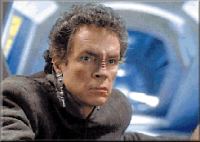
Civil unrest escalated in 2370, instigated by The Alliance for Global Unity, otherwise known as the Circle. Their activities climaxed when they besieged the Provisional Government and Deep Space Nine. However, it was the highly popular Minister Jaro Essa who had engineered the coup, using the Circle as a front. Jaro was an outspoken opponent of the Cardassians during the Occupation and equally opposed to the Federation presence on Deep Space Nine. He convinced more than a few Bajoran militia officials to support his cause and lend their military power in the uprising. When Jaro's connection with the Cardassian government was exposed, however, his plans were thwarted and he went into hiding from shame and public outrage over his hypocrisy. Li Nalas, who was liberated from a Cardassian POW camp not long before, died in the crossfire during the incident.
Towards the middle of 2370, several million Skreens from the Gamma Quadrant applied for asylum on Bajor, believing it to be their promised land. The Provisional Government decided against having to support so many refugees when the planet was still recovering from the Occupation. Instead, the Federation transported them to a suitable M Class planet to begin colonization.
Bajoran colonists on New Bajor fell victim to Dominion forces at the end of the year, their lives and presence eliminated from the colony they had only recently populated. The Dominion clearly showed their intolerance of an incursion into their territory, and as a show of force, easily destroyed the U.S.S. Odyssey, which was on a mission to the Gamma Quadrant to retrieve Commander Sisko, Jake, Quark, and Nog.
The Dominion threat prompted Starfleet to deploy the warship U.S.S. Defiant to Deep Space Nine the following year, serving to protect the station as well as Bajor from seemingly imminent invasions. Bajor and Cardassia formally signed a peace treaty in 2371, ending years of hostility and opening a new chapter in bilateral relations. Exchange of Ambassadors, return of the stolen Orbs and war reparations to Bajor for damages were included in the provisions. Kai Winn would be credited for the treaty signed with Legate Turrel, though it was Vedek Bareil who died closing the talks he had initiated and brought about the treaty.
The year also saw the return of the Orb of Wisdom, courtesy of Grand Nagus Zek, who was paid a small price for his troubles.
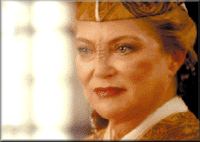
Shortly after, First Minister Kalem Opren died, leaving the highest political chair empty. Kai Winn secured the position and became both spiritual leader and political ruler, leaving certain Bajorans skeptical about her monopoly on power. After Kai Winn reacted rashly to the refusal of Shakaar to return a few soil reclamators, Shakaar led his past fellow resistance cell members, Major Kira among them, to renegade lives in the mountains in protest. Winn cracked down by sending in her militia, an action which provoked widespread public disapproval on Bajor. After some running and hiding from the militia, Shakaar convinced the leader, who was also a former resistance fighter, to put down his weapons and seek other options. In the end, Shakaar ran for First Minister and won an overwhelming victory.
The tension between the Dominion and the Alpha Quadrant powers rose increasingly the following years. The Klingon invasion of Cardassia served to set off a chain of events that eventually escalated into war with the Federation and the dissolving of the Khitomer Accords.
Meanwhile, Bajor was still working towards membership into the United Federation of Planets. During a conference on Deep Space Nine, the Cardassian extremists The True Way made an attempt on First Minister Shakaar's life which was exposed by Lt. Commander Worf.
Later, the title of Emissary was challenged by Akorem, saved from death by the Prophets and thrown two centuries into 24th century Bajor. Though he assumed the title briefly, the unpopularity of his archaic reforms soon pressed Captain Sisko to reassert himself and resume the title of Emissary. The Prophets were testing their Emissary, and later placed Akorem back into his own time.
The year 2372 marked the beginning of conflict for the Alpha Qhadrant, Klingon forces engaged the Federation in warfare, and even on Bajor, the fabled Pagh-Wraiths were freed from the fire caves and soon wreaked havoc, loosing no time to attempt the elimination of the Prophets within the Celestial Temple.
With Cardassia freed from the iron grip of the Central Command after a successful coup, the new civilian government returned the Orb of Time to Bajor as a gesture of friendship. It was also at about this time that Emissary Captain Sisko experienced a pagh temfar and located the lost city B'Hala, from which he realized the urgency of postponing Bajor's entrance into the Federation:
"Locusts - they'll destroy Bajor unless it stands alone...Bajor must not join the Federation - if it does, it will be destroyed!"
Membership into the Federation was postponed by the Bajoran Council of Ministers as a result of the Emissary's warnings.
It was not three months before the civilian government was deposed by Gul Dukat, who promptly joined the Dominion and became the head of the new Cardassian government. By now awareness of the Founder's infiltration has made the Alpha Quadrant apprehensive. Yet, the skilled impostors still almost managed to destroy Bajor and Deep Space Nine by attempting to make the Bajoran sun go nova.
With the Dominion steadily breaking through the Federation/Klingon fleet and gaining ground in its conquest of the Alpha Quadrant, Bajorans became increasingly alarmed by the prospects of a Dominion victory. Kai Winn consulted the Emissary on what course to take, since the Dominion offered a nonaggression pact which would secure the safety of Bajor as long as it remained neutral in the war. Sisko could not make any guarantees about Bajor's security, and advised Winn to stall for time. But eventually, when the Federation pulled out of Deep Space Nine, he told Winn bluntly that he could not make any guarantees for the safety of Bajor and asked her to sign the pact.
While the Dominion and its Cardassian allies occupied Deep Space Nine, again renamed to Terok Nor, the Bajorans were compelled to cooperate. Major Kira remained liaison officer, but the relationship is now Dominion/Bajor, and she came to see that she had in effect become the Collaborator she loathed in her terrorist days.
The Federation retook the station when the Wormhole aliens intervened and prevented Jem'Hadar reinforcements from reaching the Alpha Quadrant, but the war was nowhere near over. With Deep Space Nine as the front line of defense against the Dominion, the Bajoran System was more important than ever.
The wormhole inverted itself and the Prophets seemingly abandoned Bajor when Dukat, possessed by a Pagh-Wraith destroyed the Orb of Prophesy. The turn of events shook Bajor's confidence in its Emissary, but Sisko later recovered the Orb of the Emissary and restored the wormhole.
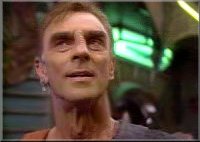
Towards the end of 2375, Kai Winn saw a vision from the prophets for the first time. She was given the task of the "Restoration of Bajor", and there would be a guide, a "man of the land", who would help her walk the path laid down by them. Ecstatic that the prophets have finally spoken to her, she quickly agreed to do anything for the Prophets. Anjohl, a "simple farmer" visited her at around the same time and she immediately believed him to be the guide. He soon shared her bed and her favors, but in one horrible vision, the "Prophets" turned out to be none other than the Pagh-Wraiths. Though frightened at first, Kai Winn tired of the silence of the Prophets and of remaining in the shadow of Sisko, and decided to take the path the Pagh-Wraiths laid out for her.
At around the same time, Colonel Kira was sent to Cardassia to help Damar's resistance cell. They who once oppressed Bajor and created people like Kira had become the oppressed themselves, and to add to the irony, Kira would be key in their rebellion against the Dominion. From the once deep hatred of any Cardassian, Kira had learned to not let generalization influence her judgment and though she had no love for Cardassians, she helped the resistance as much as she could. The role she played in the freeing of Cardassia will in the future pave the way for bilateral ties and a repaired relationship between the once enemies.
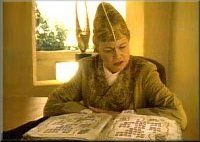
Kai Winn returned to Bajor after Sisko went against the will of the prophets and married Kassidy Yates, where she began to use her position to access the forbidden Kosst Amojan books. Considered by all Bajorans to be the Book of Evil, it details how to release the Pagh-Wraiths from the fire caves, where they were trapped eons ago by the Prophets who now reside in the Celestial Temple. Prodded along by Anjohl, Winn spent many months on her project without success. She could not decipher the book, which consisted of empty pages. When Sobor found out that Anjohl was none other than Dukat surgically altered to appear Bajoran, Winn was shocked beyond reason, and in a dizzied state accidentally stabbed her faithful servant. Frightened at what she'd done, she vowed to destroy the evil book, but the bloody knife in her hand set the book ablaze, and lo, there were Bajoran ideograms on the once empty pages. Dukat she banned from her bed and cast into the streets when he blinded himself by trying to read the Kosst Amojan himself.
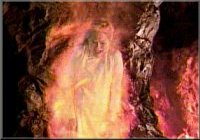
Winn eventually read through the book and she took along Dukat, who had been retrieved from the streets, to the fire caves, where she freed the Pagh-Wraiths by sacrificing Dukat and reading chants from the book. The Pagh wraiths, however, passed over Winn and favored Dukat, who was again inhabited by a Pagh wraith. He incinerated Winn and tried to overpower Sisko, who'd come down to confront him. They both tumbled into the depths of the fire cave, and with the book destroyed as well as Dukat, the Emissary's work was finished, and he joined the Prophets in the Celestial Temple. The Emissary had forever sealed away the Pagh-Wraiths, and they would no longer harm anyone again, but news of Kai Winn's betrayal will surely have lasting effects on Bajoran religion and politics. The new cooperative spirit between the Cardassians and Bajorans promises a new future where the old archenemies can coexist peacefully, and Bajor's sorrows as an occupied land will be but a faded memory.
|
 Physiology
Physiology







